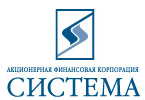|
|
|
 |
Virtual Tours round the Russian Museum The Mikhailovsky Palace |
     |
The Russian Museum
»
The Mikhailovsky Palace
»
Room 6
Room 6The icon had dominated for almost seven centuries and had left a deep trace in Russian art. Yet this period also witnessed a break in art consciousness, with new artistic principles laid on traditional ones. It is not surprising that the careers of many masters of this time often underwent dramatic changes. One such artist was Ivan Vishnyakov (1699–1761), creator of the enchanting and enigmatic portraits of Sarah and William Fairmore. His portrait of Sarah Eleonora Fairmore (1740 — after 1805) is testimony to his undoubted talent and high professionalism. There is an undoubted proximity here to European portraits. At the same time, the works are slightly maladroit, betraying a primitive purity and inexperience of the newly assimilated devices of oil painting. The traditions of icon-painting, with its one-dimensional treatment of space and economic use of colour, are also apparent in the portraits of William and Sarah Fairmore. Somewhat later, as in Europe, the portrait became the most popular genre in Russian art. Small chamber portraits and large official representations of the aristocracy of the day and age comprise an interesting and important part of the collection of the Russian Museum. Despite the European orientation and obvious technical merits of the canvases of such masters as Alexei Antropov (1716–1795) and Ivan Argunov (1727–1802), echoes of medieval traditions still linger on in their portraits. Mosaic portraits of Peter I, Catherine II and others were produced at the factory founded by Mikhail Lomonosov in 1754 near St. Petersburg. |
The Project “The Russian Museum: the Virtual Branch” |